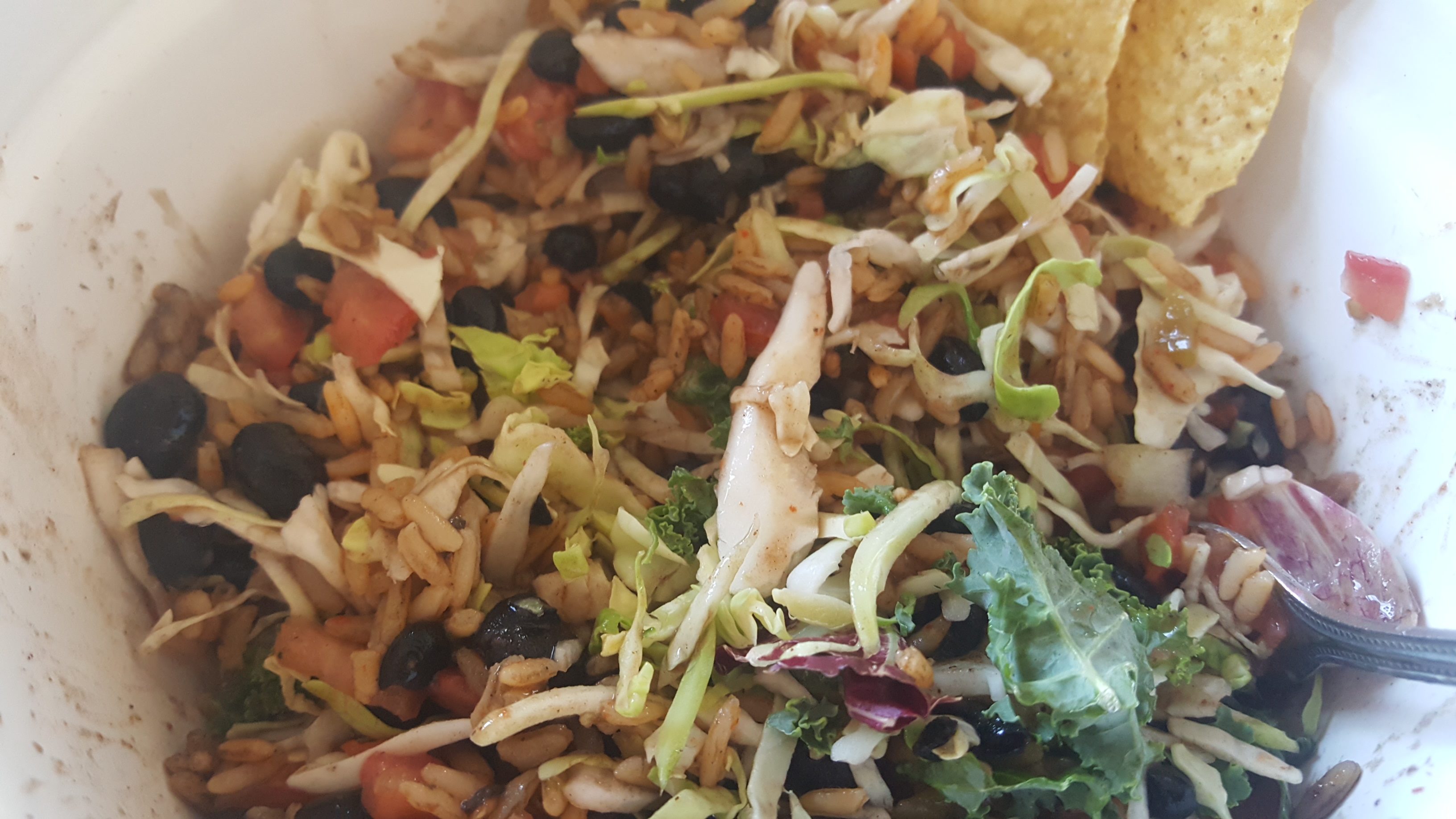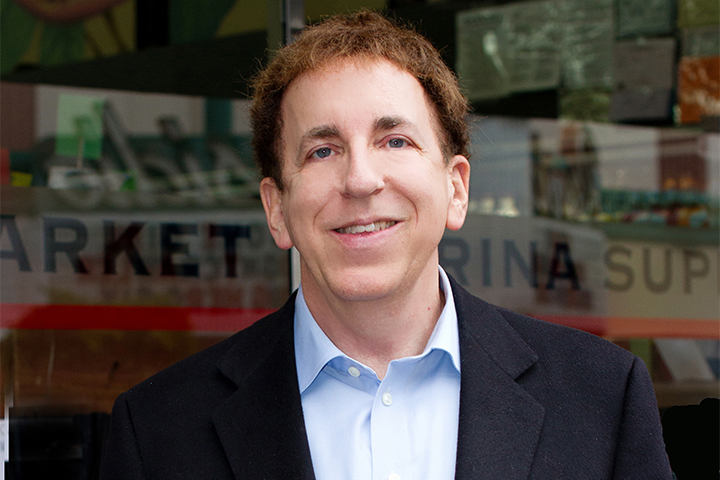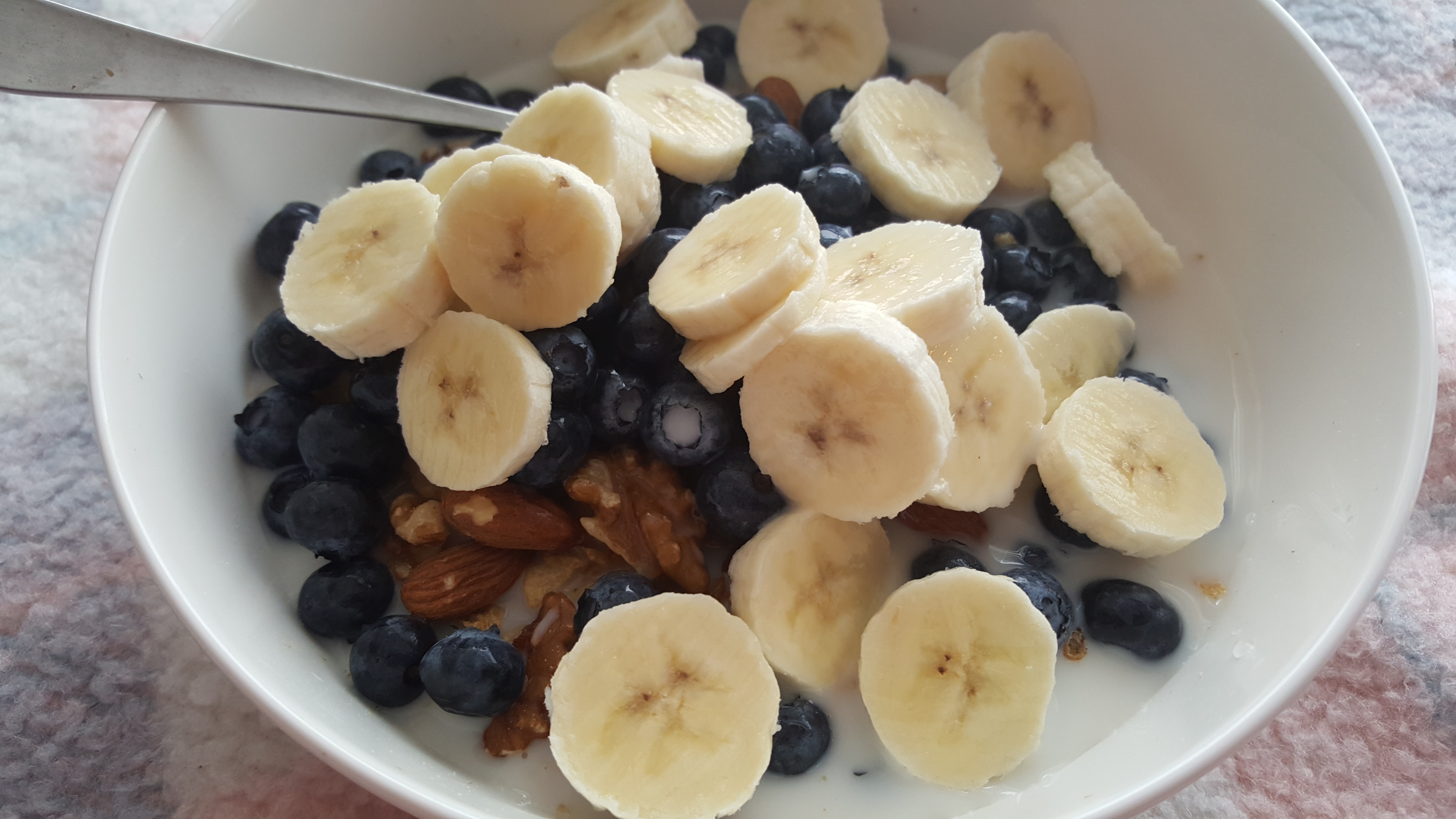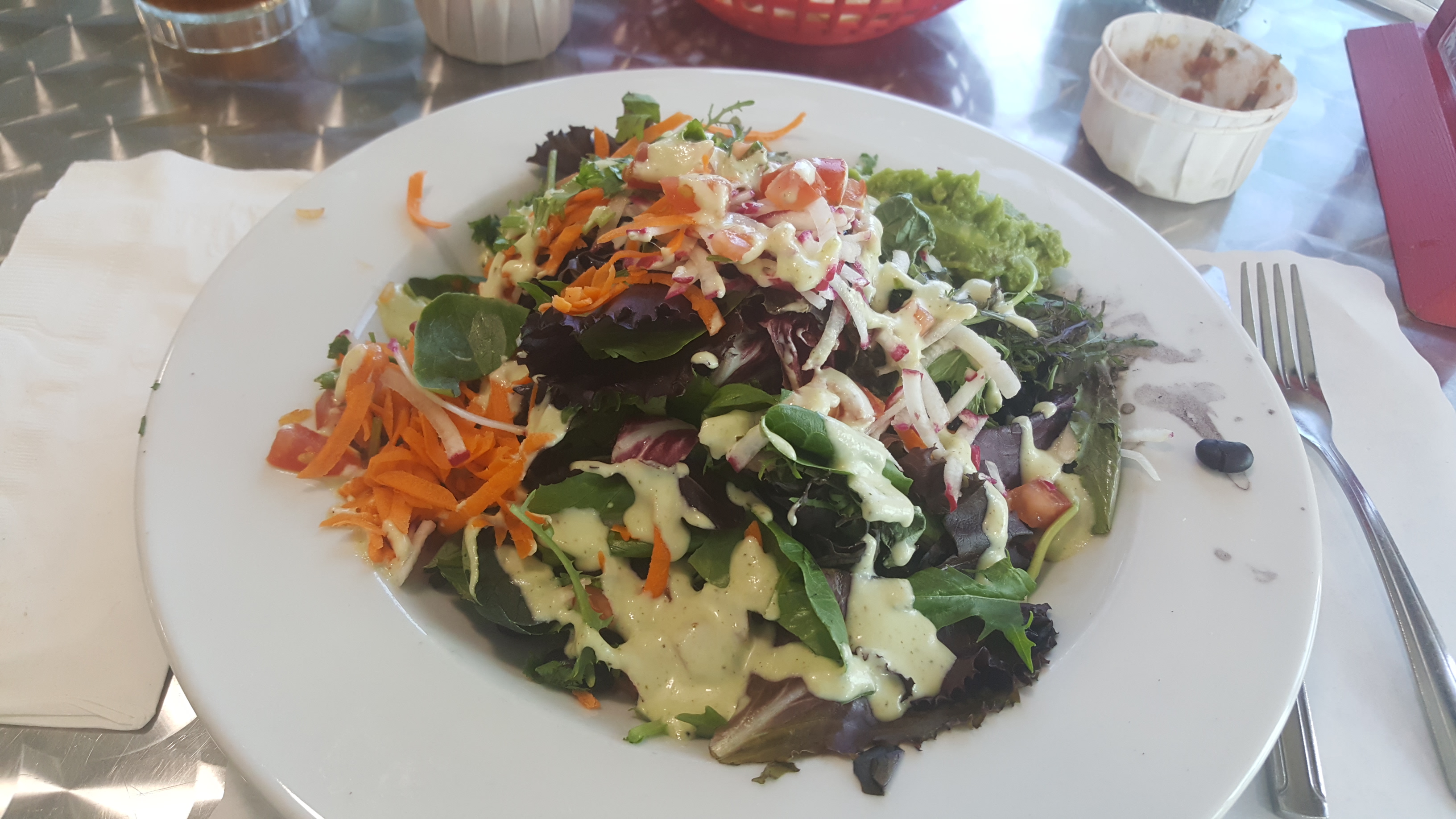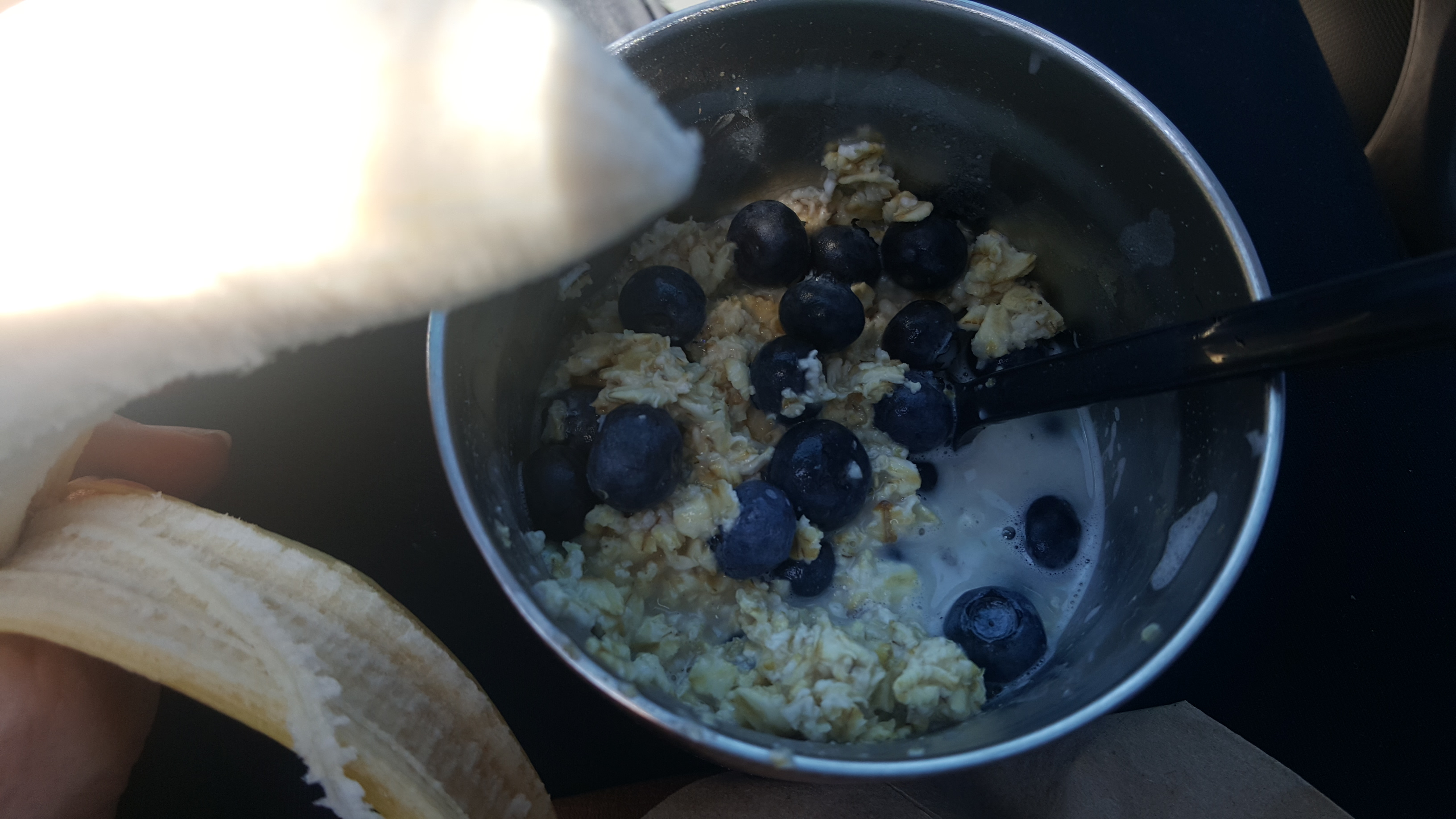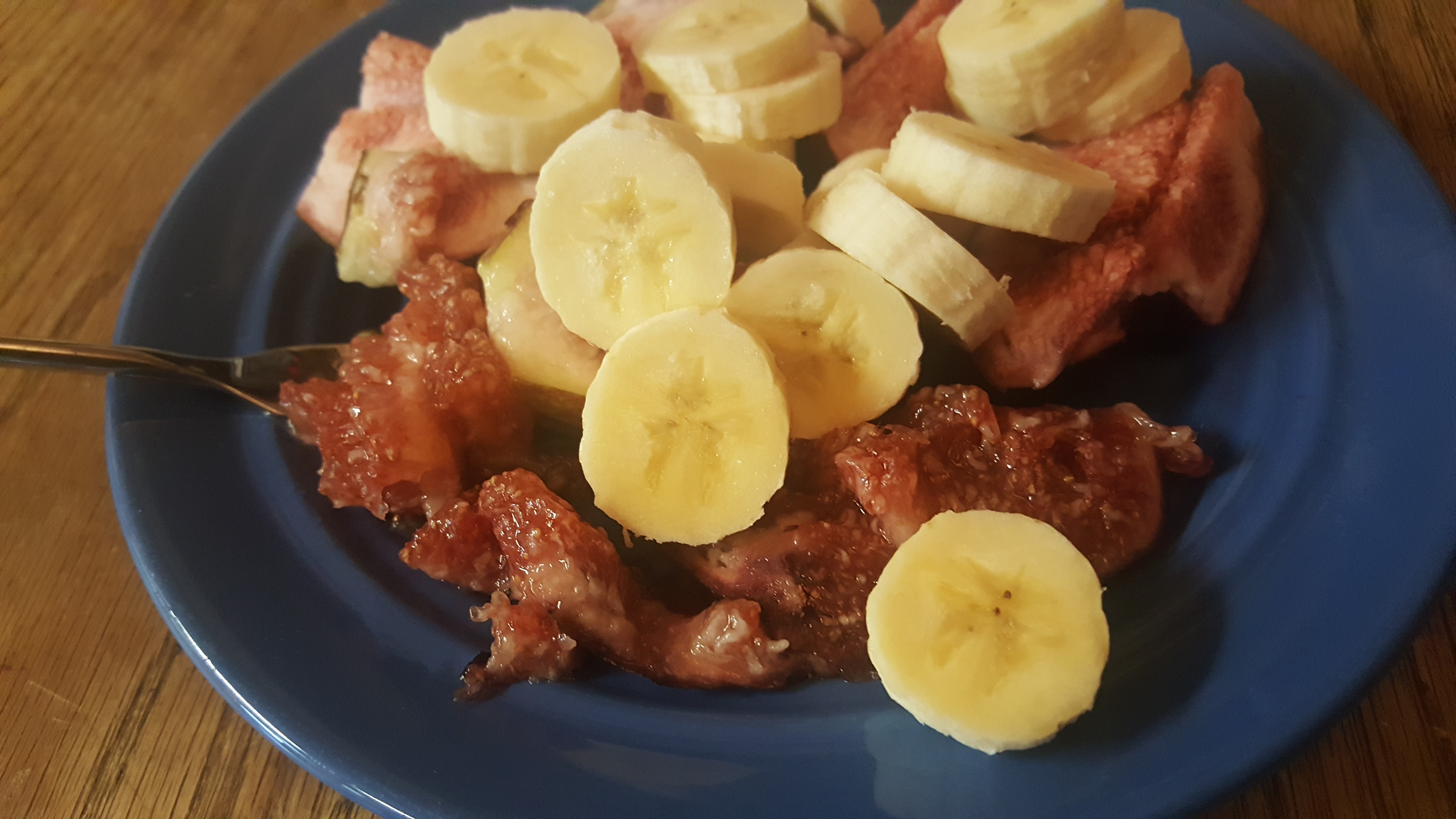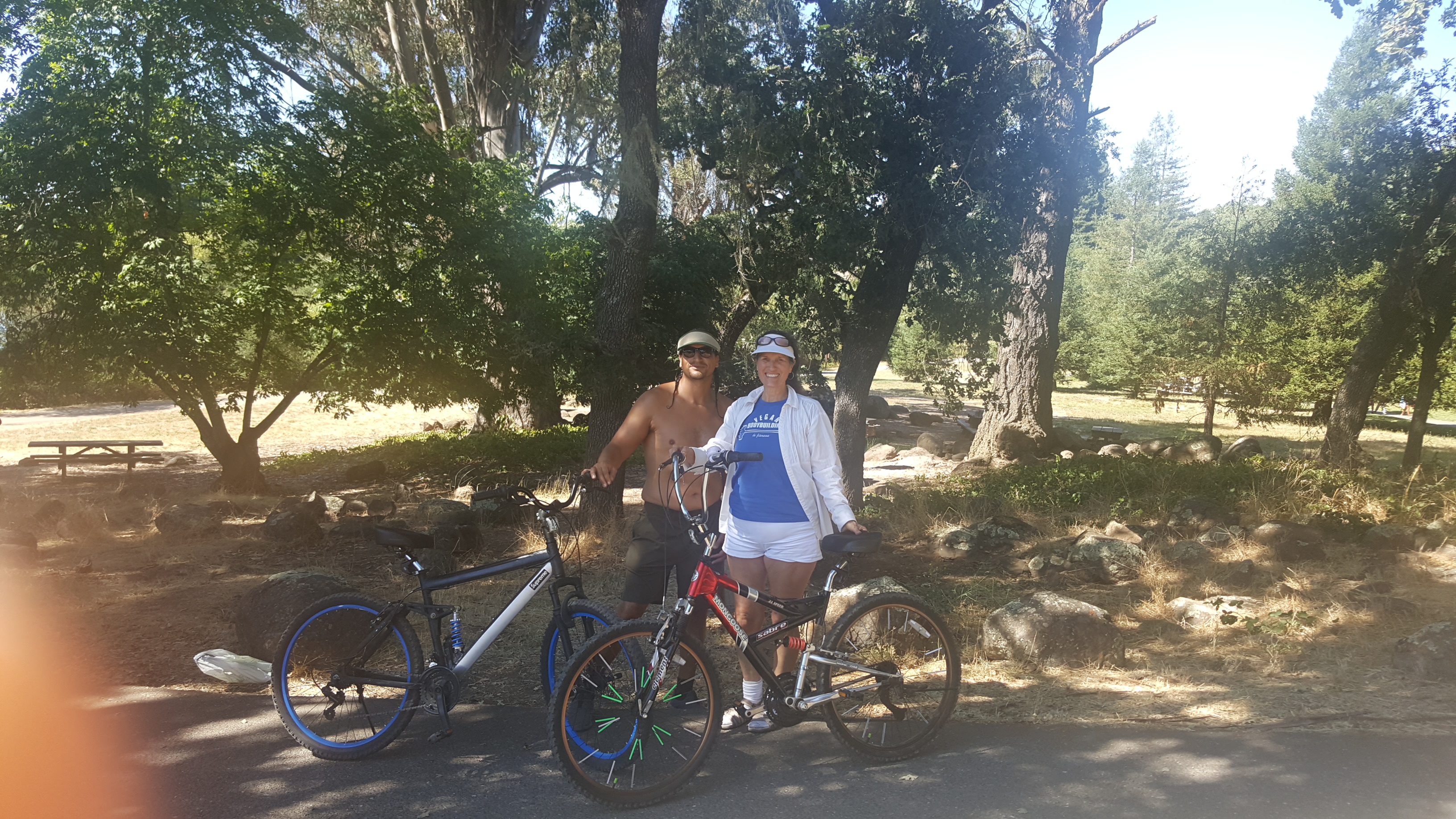Editor’s note: This guest piece in response to a Skeptical Cardiologist blog post has been published in its entirety without editing at the author’s request.
No one has a monopoly on truth. Anyone is welcome to criticize my work, as a healthy, mutually respectful debate on the facts leads everyone closer to what is true. But personal attacks do not. And if Dr. Pearson is going to criticize my work, then he should get his facts straight.
It is particularly unfortunate that he portrays himself as the defender of good scientific research when he displays a surprising lack of understanding of basic concepts of science, experimental design, and statistics as described below — e.g., that if something is not statistically significant in a study with a p-value of 0.81, then it is highly likely to be a chance finding.
I don’t usually respond to snarky ad hominem attacks masquerading as a scientific critique. But having spent over 40 years directing rigorous research demonstrating that comprehensive lifestyle changes can often reverse the progression of even severe coronary heart disease as well as many other chronic diseases, it saddens me that this inaccurate and inflammatory (in every sense of the word) article by Dr. Pearson was published by MedPage Today, as it may discourage some physicians from recommending these lifestyle changes for their patients that could greatly help them.
In that spirit, below is a detailed rebuttal of each of his assertions. Please forgive the length, but I believe it’s important to be comprehensive.
“The Ornish website proclaims it is the first program ‘scientifically proven to undo (reverse) heart disease.’ That’s a huge claim. If it were true, wouldn’t the Dietary Guidelines for Americans, the American Heart Association, and most cardiologists and nutrition experts be recommending it?”
Many of them are, both by name and in substance. For example, the “Ornish diet” has been rated “#1 for Heart Health” by a panel of independent medical and nutrition experts at U.S. News & World Report for eight years from 2011-2019.
The Dietary Guidelines for Americans as well as the American Heart Association now emphasize the importance of a whole foods plant-based diet. In contrast, Dr. Pearson’s personal website states, “I now consume full fat milk, yogurt and cheese as much as I desire and my omelettes contain egg yolks. Oh, and I slather butter on food at the drop of a hat,” which is completely in conflict with their dietary guidelines.
Before I review the data from our randomized controlled trials, it may be helpful to look at the larger context of the research that my colleagues and I have conducted.
Most patients with coronary heart disease do not spontaneously show reversal of their illness. Because of this, when I began conducting research in 1977, the idea that the progression of heart disease could be reversed by any means was considered impossible.
And yet, time and time again, we have shown dramatic improvements and reversal of even severe coronary heart disease significantly proportional to the degree that patients make these comprehensive lifestyle changes — at any age. These include a whole foods plant-based diet low in both fat and sugar/refined carbohydrates, moderate exercise, stress management techniques, and social support. Our dietary guidelines recommend vegetables, fruits, whole grains, and legumes in their natural forms — which are what the Dietary Guidelines for Americans, the American Heart Association guidelines, and most reputable nutrition experts predominantly recommend.
Our unique contribution has been to use high-tech, state-of-the-art scientific measures to prove the power of these simple lifestyle changes. I am one of the founders of a new field, “lifestyle medicine,” along with Dr. David Katz (Director, Yale University Prevention Research Center), Dr. Walter Willett (Chair, Dept. of Nutrition, Harvard School of Public Health), and others. Lifestyle medicine uses comprehensive lifestyle changes to treat and often reverse the progression of coronary heart disease and several other chronic conditions as well as to help prevent these.
My colleagues and I conducted two randomized controlled trials showing, for the first time, reversal of coronary heart disease progression by making comprehensive lifestyle changes. We used what are still considered the state-of-the-art measures in both randomized controlled trials, blindly assessed by independent and often very skeptical experts. These measures included exercise radionuclide ventriculography, quantitative coronary arteriography, cardiac PET scans, and cardiac events.
In the first randomized controlled trial, exercise radionuclide ventriculography revealed that experimental group patients who went through this lifestyle medicine program showed statistically significant and clinical significant improvements in their ejection fraction and regional wall motion when compared to the randomized control group after only 24 days.
In the experimental group patients, the ejection fraction response from rest to peak exercise fell at baseline (i.e., worsened due to severe myocardial ischemia and resulting left ventricular dysfunction) but rose appropriately after only 24 days of making these lifestyle changes (i.e., improved). In contrast, the randomized control group showed continued decline (worsening) in their ejection fraction response after 24 days.
Patients in the experimental group demonstrated a 44% mean increase in duration of exercise, a 55% mean increase in total work performed, and improved left ventricular regional wall motion during peak exercise.
Also, we measured a 20.5% mean decrease in plasma cholesterol levels and a 91.0% mean reduction in frequency of anginal episodes after only 24 days. Most of these patients became angina-free.
All of these differences were statistically significant and clinically significant when compared to the randomized control group. They improved so much that it was necessary to reduce or discontinue antihypertensive and cardiac medications in 78% of the experimental group patients but in none of the randomized control group patients. These findings were reported in the Journal of the American Medical Association.
In the second randomized controlled trial, the Lifestyle Heart Trial, patients who went through our lifestyle medicine program reported substantial improvements in anginal severity after one year, whereas angina increased (worsened) in the randomized control group; these differences were highly statistically significant (P=0.0006). Most became angina-free in the first few weeks and were able to avoid revascularization that they otherwise would have received, as described below.
We also measured significant regression (reversal/improvement) in coronary atherosclerosis (percent diameter stenosis) after one year as measured by quantitative coronary arteriography blindly assessed by independent observers.
In contrast, the randomized controlled group showed significant progression (worsening) of coronary atherosclerosis after one year. These differences between groups were statistically significant and clinically significant.
Also, there was a statistically significant correlation between degree of adherence to the lifestyle program after one year and changes in percent diameter stenosis. In other words, the more closely patients followed this lifestyle medicine program, the more reversal of coronary atherosclerosis we measured. The one-year findings of this study were published in The Lancet.
Based on these findings, we received RO1 peer-reviewed funding from the National Heart, Lung, and Blood Institute of the National Institutes of Health to extend the Lifestyle Heart Trial for four additional years. We measured continued statistically significant and clinically significant regression(reversal/improvement) in coronary atherosclerosis after five years whereas the randomized control group showed continued progression (worsening) after five years.
Again, there was a statistically significant correlation between degree of adherence to the lifestyle program after five years and changes in percent diameter stenosis after five years. This study was published in the Journal of the American Medical Association.
Under their physician’s supervision, many of these patients were able to reduce or discontinue medications to control their heart disease, blood pressure, lipids, and type 2 diabetes that they otherwise would have taken for a lifetime.
For example, there was a significant 40% average reduction in LDL-cholesterol after one year-comparable to statins-even though none of these experimental group patients was taking cholesterol-lowering drugs. And there was a 24 pound average weight loss in the experimental group after one year and a 12.7 pound average weight loss after five years.
In addition to these randomized controlled trials, my colleagues and I have conducted and published several demonstration projects in thousands of patients. We are achieving better clinical outcomes, larger cost savings, bigger changes in lifestyle, and better adherence than any study has ever shown.
On August 12, 2010, after sixteen years of review, the Centers for Medicare and Medicaid Services began providing Medicare coverage for “Dr. Ornish’s Program for Reversing Heart Disease” under a new benefit category, “intensive cardiac rehabilitation.” Many national insurance companies are also providing coverage after doing their own formal scientific reviews of our lifestyle medicine program.
As mentioned above, for over 40 years, my colleagues and I at the non-profit Preventive Medicine Research Institute, in collaboration with leading scientists and medical institutions (including UCSF, Harvard Medical School, and others) have published a series of randomized controlled trials and demonstration projects showing that comprehensive lifestyle changes may slow, stop, and often reverse the progression of even severe coronary heart disease.
These studies have been conducted with well-respected collaborators, published in the leading peer-reviewed journals, and presented at the most credible scientific meetings. These include the Journal of the American Medical Association, The Lancet, Proceedings of the National Academy of Sciences, The Lancet Oncology, the New England Journal of Medicine, American Journal of Cardiology, and others. I have also published articles in leading medical textbooks (including Harrison’s Principles of Internal Medicine (online), edited by Eugene Braunwald et al).
I have presented these research findings on many occasions at the annual scientific meetings of the American Heart Association, American College of Cardiology, American Dietetic Association, the Institute of Medicine’s National Academy of Sciences, and many others.
I was appointed by President Clinton to the White House Commission on Complementary and Alternative Medicine Policy and by President Obama to the White House Advisory Group on Prevention, Health Promotion, and Integrative and Public Health. I am also a member of The Lancet Oncology “Moonshot Commission.”
My colleagues and I have been training and certifying teams of health care professionals at leading hospitals, clinics, and health systems in this lifestyle program for reversing heart disease (in collaboration with Sharecare). These programs are usually directed by cardiologists. We published data on almost 3,000 patients in the peer-reviewed American Journal of Health Promotion.
We have also collected data on almost 8,000 patients who have been through this program in 18 states. Many participants reduced or discontinued medications to lower BP, lipids, and blood sugar with approval of their physicians; these improvements would have been even greater if their medications were unchanged:

Kim A. Williams, MD, was President of the American College of Cardiology 2015-16. When he was diagnosed with hypercholesterolemia, he went on my lifestyle program and his LDL decreased from 170 to 90 mg/dL, and he described this in MedPage Today. Dr. Williams later chaired a session on lifestyle medicine at the American College of Cardiology annual scientific sessions in Chicago that featured our work, and over 1,000 cardiologists attended.
“Dean Ornish has an MD degree from Baylor College of Medicine and trained in internal medicine but has no formal cardiology or nutrition training (although many internet sites, including Wikipedia, describe him as a cardiologist).”
Since he has belittled my training and qualifications, it may be worth mentioning that I had the privilege of doing my core surgery training during medical school at the Baylor College of Medicine with Dr. Michael DeBakey, one of the pioneers of cardiovascular surgery (who later credited my lifestyle medicine program with keeping him alive until age 99). Dr. Pearson neglected to mention that I was also a Clinical Fellow in Medicine at Harvard Medical School and a Resident in internal medicine at the Massachusetts General Hospital (considered the #1 program of its kind when I trained there 1981-4). I have never claimed to be a cardiologist and always ask people to correct this when it is brought to my attention.
I am currently Clinical Professor of Medicine at both UCSF and UCSD and have written seven books on nutrition, all national bestsellers. I am a member of the American College of Cardiology’s Nutrition & Lifestyle Work Group, and I reviewed the science of nutrition and integrative and lifestyle medicine at the Institute of Medicine’s first “Summit on Integrative Medicine” at the National Academy of Sciences.
I received the University of California Berkeley, “National Public Health Hero” award; the Beckmann Medal from the German Society for Prevention and Rehabilitation of Cardiovascular Diseases; a U.S. Surgeon General Citation; the Jan J. Kellermann Memorial Award for distinguished contribution in the field of cardiovascular disease prevention from the International Academy of Cardiology; the Stanley Wallach Lectureship Award from the American College of Nutrition; and others. I have given invited expert testimony at the U.S. Senate, the U.S House of Representatives, the U.S. Department of Agriculture, and many others, and I consulted with the chefs at The White House, Camp David, and Air Force One to cook more healthfully (1993-2000).
A review of PubMed revealed that Dr. Pearson has not authored any articles or research on nutrition that were published in a peer-reviewed journal.
Being a cardiologist clearly does not provide any significant training in nutrition. I recently co-authored a paper surveying the amount of nutrition training in medical schools and cardiology fellowship training programs. In brief, the total amount of nutrition education received in cardiology fellowships programs over a four-year period is zero.
A 2013 document from the Accreditation Committee of Graduate Medical Education specifies detailed requirements for specialty training in cardiovascular disease. “Training must include, for example, performance of 10 cardioversions, interpretation of 150 echocardiograms, and participation in 100 cardiac catheterizations. However, in this 34-page accreditation document for cardiology trainees, there is NO mention of a requirement for nutrition education.”
“After his medical training, Ornish founded the Preventive Medicine Research Institute and has widely promoted his Ornish Lifestyle Program. Claims on the program’s website are based on a study he performed from 1986 through 1992 that originally had 28 patients with coronary artery disease in an experimental arm and 20 in a control group. You can read the details of the 1 year results here and the 5 year results here.”
As noted above, we conducted two randomized controlled trials as well as several demonstration projects.
In the second randomized controlled trial, the Lifestyle Heart Trial, as described above, there were statistically significant improvements in virtually all measures after one year and after five years. It is a common belief that the larger the number of patients, the more valid a study is, but this is not true. Judging the quality of a study by the number of patients is akin to judging the quality of a book by the number of pages.
The point of any study is to determine if an intervention-whether a new drug, device, surgical procedure, or lifestyle intervention-is causing a beneficial treatment effect or if these findings may be due to chance. If there is a less than 5% likelihood that these findings are due to chance, then it is considered statistically significant. If the intervention is potent, if adherence is high, and if the endpoint measures are accurate and reproducible, then statistical significance may be documented in smaller samples. This is what we found in our studies.
As the respected cardiologist Atillio Maseri wrote:
“Very large trials with broad inclusion criteria raise grounds for concern for practicing physicians and for the economics of healthcare. The first is the fact that the larger the number of patients that have to be included in a trial in order to prove a statistically significant benefit, the greater the uncertainty about the reason why the beneficial effects of the treatment cannot be detected in a smaller trial.”
In other words, smaller randomized controlled trials which show highly-significant outcomes are as scientifically valid as larger ones-indeed, an even greater therapeutic benefit is needed to show statistical significance in a smaller sample, so they may be even more clinically relevant.
By analogy, if one were doing a randomized controlled trial of penicillin in the 1950s (i.e., before drug resistance) of 48 men and women who had pneumococcal pneumonia and gave the antibiotic to only the experimental group, it is highly likely that statistically significant and clinically significant differences would be documented in a relatively short period of time.
The fact that we showed statistically significant differences after 24 days in the first randomized controlled trial and after both one year and five years in the second randomized controlled trial compared to the randomized control group in smaller groups of patients indicates that the lifestyle intervention was especially potent and effective. The statistically significant dose-response correlation between adherence to the intervention and changes in outcomes at both one year and at five years adds to the strength of these findings.
Dr. Pearson confuses efficacy with generalizability. When these two randomized controlled trials documented clear efficacy of this intensive lifestyle intervention, we conducted larger demonstration projects to study its generalizability (external validity).
Once an intervention has been proven to be effective — i.e., no longer in equipoise — it is no longer ethical to conduct randomized controlled trials, which is why we began a series of demonstration projects to assess generalizability once these two randomized controlled trials documented clear efficacy:
Anna Silberman and her colleagues at Highmark Blue Cross Blue Shield published the results of a demonstration project with almost 3,000 patients who went through our lifestyle medicine program at 24 hospitals and clinics in West Virginia, Nebraska, and Pennsylvania. They showed significant improvement in virtually all metrics after 12 weeks and also after one year. These include LDL, weight (BMI decreased by 6.6%), systolic blood pressure, diastolic blood pressure, and hemoglobin A1c even though medications were often reduced by their own referring physicians during this time because they had less need for them. This study was published in the peer-reviewed American Journal of Health Promotion.
Although the lifestyle intervention was only three months long, adherence was almost 80% after one year at all sites. Since then, we have trained additional hospitals and clinics throughout the U.S., and adherence to the program has been 85%-90% after one year in all sites.
Highmark Blue Cross Blue Shield continued to collect data on all of their patients (over 4,000) who went through our lifestyle medicine program. Again, they showed significant improvement in virtually all metrics after 12 weeks and also after one year at all sites. They found that overall health care costs were decreased by 50% in the first year when compared to a control group matched for age, gender, and disease severity in a second demonstration project (unpublished).
The Multicenter Lifestyle Demonstration Project was conducted by Mutual of Omaha and Harvard Medical School. It was designed to determine if our lifestyle medicine program can be a direct alternative to revascularization for selected patients without increasing cardiac events.
A total of 333 patients completed this demonstration project (194 in the experimental group and 139 in the control group). 77% of experimental group patients were able to avoid revascularization for at least 3 years by making these comprehensive lifestyle changes without increasing cardiac morbidity and mortality. These patients reported reductions in angina comparable with what can be achieved with revascularization.
Mutual of Omaha calculated saving almost $30,000 per patient in the first year. This study was publishedin the American Journal of Cardiology.
My colleagues and I have been training hospitals, health systems, clinics, and physician groups around the country in this lifestyle medicine program since it was approved by CMS in 2010. We have collected data on each of the 7,744 patients who enrolled. Again, these patients showed significant improvement in virtually all metrics at all sites.
“While 193 patients with significant coronary lesions from coronary angiography were ‘identified,’ only 93 ‘remained eligible.’ These were ‘randomly’ assigned to the experimental or control groups. Somehow, this randomization process assigned 53 to the experimental group and 40 to the usual-care control group. If this were truly a 1:1 randomization the numbers would be equal and the baseline characteristics equal.”
Again, Dr. Pearson displays his lack of understanding about randomized controlled trials. This issue was discussed by K.F. Schulz in The Lancet:
“We cringe at the pervasive notion that a randomised trial needs to yield equal sample sizes in the comparison groups. Unfortunately, that conceptual misunderstanding can lead to bias by investigators who force equality, especially if by non-scientific means. In simple, unrestricted, randomised trials (analogous to repeated coin-tossing), the sizes of groups should indicate random variation. In other words, some discrepancy between the numbers in the comparison groups would be expected. The appeal of equal group sizes in a simple randomised controlled trial is cosmetic, not scientific.”
In the Methods section of the JAMA 1998 article, my colleagues and I (including Richard J. Brand, PhD, who at the time was Professor and Head, Division of Biostatistics, Division of Epidemiology and Biostatistics, UCSF) wrote:
“We identified 193 patients as potentially eligible for our study who agreed to undergo quantitative coronary angiography. Following angiography, 93 patients remained eligible and were randomly assigned to experimental or control groups using a randomized invitational design to minimize crossover, ethical concerns, nocebo effects, and dropout. Of these 93 patients who were eligible, 53 were randomly assigned to the experimental group and 40 to the usual-care control group. Patients were then contacted and invited to participate in the study; 28 (53%) and 20 (50%) agreed to participate in the experimental and control groups, respectively.”
“The control group was older, less likely to be employed, and less educated.”
While Table 1 shows that there were slight differences between the groups in these measures, none of these differences was statistically significant. As Dr. Pearson should know, if the differences are not statistically significant, they are not considered to be real or meaningful. Thus, these baseline characteristics were considered equal.
“The experimental patients received ‘intensive’ lifestyle changes (<10% fat whole-foods vegetarian diet, aerobic exercise, stress management training, smoking cessation, group psychosocial support). The control group had none of the above. Needless to say, this was not blinded. The researchers definitely knew which patients were in which group.”
Of course the people providing the lifestyle medicine intervention knew which patients were receiving it — how could it be otherwise? But as we stated in The Lancet:
“To reduce the possibility that knowledge of group assignment might bias the outcome measurements, the investigators carrying out all medical tests remained unaware [blinded] of both patient group assignment and the order of the tests. Different people provided the lifestyle intervention, carried out the tests, analyzed the results, and carried out statistical analyses. Coronary arteriograms were analyzed without knowledge of sequence or of group assignment.”
“There is very little known about the 20 slackers in the control group. I can’t find basic information about them — crucial things like how many smoked or quit smoking or how many were on statin drugs.”
Again, it would be helpful if Dr. Pearson would carefully read the study before criticizing it. As clearly stated in the JAMA study:
“In the experimental group, LDL cholesterol levels decreased by 40% at 1 year and remained 20% below baseline at 5 years. In the control group, LDL cholesterol levels decreased by 1.2% at 1 year and by 19.3% at 5 years. There were no statistically significant differences in LDL levels between the 2 groups at 5 years, primarily because 9 (60%) of 15 control patients took lipid-lowering drugs between year 1 and year 5 of the study. None of the experimental group patients took lipid-lowering drugs during the 5 years of the study.”
“Only 1 patient in the experimental group was actively smoking at baseline, and she quit at entry.”
“QCA as a test for assessing coronary artery disease has a number of limitations and as a result is no longer utilized for this purpose in clinical trials. When investigators want to know if an intervention is improving coronary artery disease, they use techniques such as intravascular ultrasound or coronary CT angiography (see here) which allow measurement of total atherosclerotic plaque burden.”
This is not true. Like all tests, Quantitative coronary arteriography has limitations, but it is still used in many clinical trials and is often considered the gold standard. Coronary CT angiography is sometimes used as a non-invasive alternative to invasive quantitative coronary arteriography, but when patients are found to have significant coronary atherosclerosis on CT-angiography, they are usually advised to have an invasive coronary arteriogram. Quantitative coronary arteriography is much more accurate and reproducible than traditional coronary angiography, thereby making smaller studies more feasible.
Again, quantitative coronary arteriography was only one endpoint measure in the Lifestyle Heart Trial. The other was cardiac PET scans, which measure the bottom line — i.e., how much blood is the heart receiving? While stenosis affects perfusion, other mechanisms do so as well.
Every measure we used in both randomized controlled trials showed both statistically significant and clinically significant improvements in the patients who received this lifestyle medicine intervention when compared to a randomized control group. These include exercise radionuclide ventriculography, quantitative coronary arteriography, cardiac PET scans, and cardiac events, as well as changes in risk factors, angina, exercise capacity, and depression.
“In other words, even if we overlook the huge methodologic flaws in the study, the so-called ‘reversal’ was minuscule. Ultimately, reducing coronary artery blockages by less than 5% doesn’t really matter unless that is also helping to prevent heart attacks or death or strokes or some outcome that really matters.”
When only lesions greater than 50% stenosed at baseline were analyzed after one year, the average percentage diameter stenosis regressed from 61.1% to 55.8% in the experimental group (an 8.7% relative improvement) but progressed from 61.7% to 64.4% (a 4.4% relative worsening, or an 8.7 + 4.4 = 13.1% relative difference in stenosis) in the control group (P=0.03, two-tailed).
In addition to improving the degree of coronary artery stenosis, these lesions were remodeled in ways that improved blood flow. Coronary flow reserve increased and arterial modeling improved in experimental group patients, as we reported in the American Journal of Cardiology.
Dr. Pearson should know that myocardial perfusion-how much blood flow the heart receives-is one of the most important factors in the patient’s clinical course and prognosis. Perfusion is a fourth power function of the radius of the coronary artery.
In other words, even small changes in coronary artery stenosis cause disproportionate changes in myocardial perfusion. We measured improvements in both in the Lifestyle Heart Trial using quantitative coronary arteriography to measure stenosis and cardiac PET scans to measure myocardial perfusion.
Using cardiac PET imaging, there was a more than 300% improvement in myocardial perfusion in the experimental group when compared to the randomized control group after five years. This is not a “miniscule” degree of reversal. The dramatic reductions in angina were due to these substantial improvements in myocardial perfusion, not a placebo effect.
These findings were consistent and not skewed by a few people who showed improvement, as nearly all (99%) of the experimental group patients were able to stop or reverse the progression of their heart disease whereas only 5% of the randomized control group patients showed improvement. This study was also published in the Journal of the American Medical Association.
In addition, there were significantly fewer cardiac events in the experimental group when compared to the randomized control group after five years (please see below).
As examples of how powerful these changes can be and how quickly they can often occur because these underlying biological mechanisms are so dynamic, several patients with coronary artery disease and resulting ischemic cardiomyopathies so severe they were told they needed a heart transplant improved so much after making these lifestyle changes for only 9 weeks that they no longer needed a heart transplant. What’s the more radical intervention — a heart transplant or lifestyle changes?
For example, Robert Treuherz, MD, is a specialist in internal medicine who had a massive heart attack. He was told the damage to his heart was so extensive that he needed a heart transplant to survive. His ejection fraction was only 11-15%. While waiting for a donor heart to become available, he went through the Ornish lifestyle medicine program at the UCLA medical center (which Medicare and many insurance companies are reimbursing) to get in better shape for this surgery. Only 9 weeks later, his ejection fraction increased to over 30% (now 35%) and his clinical status improved so dramatically from these lifestyle changes that he no longer needs a heart transplant.
Here’s a link to a video in which he describes his improvements.
And here’s a link to another patient, David Foster, who also improved so much after going through this lifestyle medicine program for only nine weeks he no longer needs a heart transplant. We have several other patients with similar experiences and clinical outcomes.
I include these reports because it illustrates the power of comprehensive lifestyle changes and how quickly patients can improve in dramatic and clinically significant ways that we can measure. These are not “miniscule” changes.
Common sense makes it clear that these patients are dramatically improving. It is highly unlikely that these improvements were unrelated to their lifestyle changes.
In contrast, eight randomized controlled trials have shown that stents and angioplasty do not significantly reduce the risk of heart attacks, other cardiac events, angina, or cardiac mortality in patients with stable coronary heart disease. A more recent randomized controlled trial showed that sham stents reduced angina as much as real ones.
“There were no significant differences between the groups at 5 years in hard events, such as heart attack or death. In fact, two of the experimental group died by 5 years versus one in the control group.”
Data on cardiac events were obtained from all 48 patients, including dropouts, using the intention to treat principle. We stated a priori that cardiac events would be analyzed in aggregate since, as predicted, the number of individual events was too small to show statistical significance when each event was considered separately (type II error).
This study was never powered to look at changes in mortality. Dr. Pearson displays his lack of understanding of basic statistical concepts since there was no statistically significant difference in mortality between the two groups (P= 0.81, not even close to significance).
Of these two patients, one patient dropped out of the study shortly after enrolling and was therefore nonadherent; due to the intention to treat principle, we included his data along with everyone else’s who enrolled. It hardly indicates that the intervention didn’t work since he didn’t follow it at all.
The other patient, a former competitive athlete, was feeling so much better due to greatly reduced angina that he substantially exceeded his exercise prescription while on a rowing machine and died while on it (he was featured in the NOVA documentary on our study, “Avoiding the Surgeon’s Knife”).
There was a statistically significant reduction in overall cardiac events in the experimental group when compared to the randomized control group (P<0.001).
Cardiac events included myocardial infarction, coronary angioplasty, coronary artery bypass surgery, cardiac-related hospitalizations, and cardiac-related deaths. At 5 years, there were more cardiac events in the control group (45 events for 20 patients, or 2.25 events per patient) than the experimental group (25 events for 28 patients, or 0.89 events per patient), a 60.4% reduction in cardiac events, P<0.001.
In patients with ejection fractions <40% who were participating in the Multicenter Lifestyle Demonstration Project, a community-based, secondary prevention study implemented at 8 hospital sites, there were significantly fewer cardiac events after three months in the experimental group than in the control group.
“If you are miserable most days due to your rigid diet, you might consider that life is no longer worth living.”
In 2019, most people know that healthy food can be both delicious and nutritious.
Contrary to his assertion, the patients who go through our lifestyle medicine program report substantial reductions in depression and improvements in quality of life. For example, in the demonstration project my colleagues and I conducted with almost 3,000 patients in 24 socioeconomically diverse sites in West Virginia, Nebraska, and Pennsylvania, depression scores were reduced by 47.4% after going through our 12-week lifestyle medicine program. Data from almost 8,000 patients described above showed a 49.4% decrease in depression.
And even though Dr. Pearson wants to believe that dietary fat does not play a role in coronary heart disease progression, I would refer him to the CLAS study by David Blankenhorn et al, which was the first randomized controlled trial to show that cholesterol-lowering drugs could reverse the progression of coronary atherosclerosis.
In that study, they found that “Each quartile of increased consumption of total fat and polyunsaturated fat was associated with a significant increase in risk of new lesions.” We found a similar correlation between adherence to our lifestyle medicine program and changes in percent diameter stenosis at both one year and at five years. We found similar correlations between dietary fat and intake and changes in percent diameter stenosis in the Lifestyle Heart Trial (manuscript in preparation).
In addition to reversing the progression of coronary heart disease, we conducted a randomized controlled trial showing that these same lifestyle changes may slow, stop, or reverse the progression of early-stage prostate cancer (in collaboration with the chairs of urology at UCSF and at Memorial Sloan-Kettering Cancer Center).
We conducted pilot research with Dr. Elizabeth Blackburn, who received the Nobel Prize for her pioneering work with telomeres (which regulate cellular aging) showing, for the first time, that these lifestyle changes increase telomerase and lengthen telomeres. When we published this, The Lancet editors called it “reversing aging at a cellular level.”
We published a study with J. Craig Venter in the Proceedings of the National Academy of Sciencesshowing that these lifestyle changes caused beneficial changes in gene expression in 501 genes in only three months in men with early-stage prostate cancer. For example, hundreds of RAS oncogenes that promote prostate cancer, breast cancer, and colon cancer were downregulated.
In my newest book, “UnDo It,” I present a new unifying theory that the reason why these same lifestyle changes are beneficial in reversing the progression of so many chronic diseases is that they each affect and share so many common underlying biological causes, mechanisms, and pathways. Each of these mechanisms, in turn, is affected by what we eat, how much we exercise, how we respond to emotional stress, and how much social support we have. That is why the effects of lifestyle changes are not disease-specific-because they affect all of these mechanisms.
These include chronic inflammation and immune system dysfunction; chronic emotional stress, depression, overstimulation of the sympathetic nervous system; changes in gene expression and sirtuins; telomeres; the microbiome; oxidative stress, cellular metabolism, and apoptosis; angiogenesis; and others.
These data do not fully capture the powerful impact of these comprehensive lifestyle changes on patients’ lives when they reverse the progression of coronary heart disease and other chronic conditions. Over and over, I’ve seen patients with coronary heart disease so severe that they can’t walk across the street or go back to work or play with their kids or make love with their partner or do much of anything without getting severe angina become essentially free of chest pain after only a few weeks of making these lifestyle changes.
These patients don’t just feel better, they are better. They are showing improvements in the underlying disease process in every measure, as described above. For a better understanding of this, please listen to some of the testimonials at https://www.ornish.com/category/participant-stories/
And the only side effects are good ones.
This is also a very fulfilling way to practice medicine. If you’re interested in learning more about our work, please go to www.pmri.org and www.ornish.com. You may also contact me directly at dean.ornish@pmri.org.




